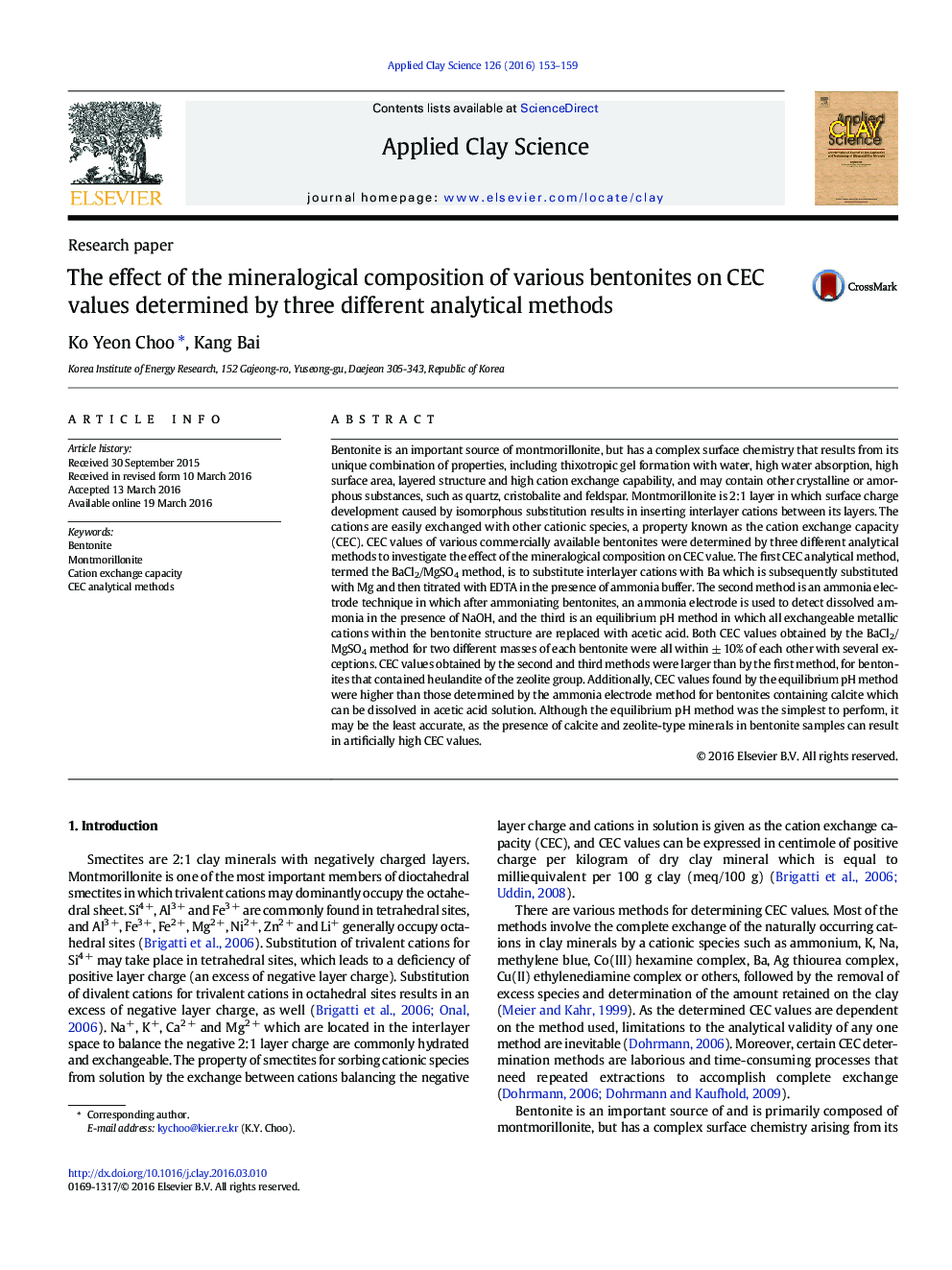| کد مقاله | کد نشریه | سال انتشار | مقاله انگلیسی | نسخه تمام متن |
|---|---|---|---|---|
| 1694054 | 1519059 | 2016 | 7 صفحه PDF | دانلود رایگان |

• CEC values of bentonites were measured by three different analytical methods.
• The mineralogical composition of bentonites had an effect on CEC values obtained.
• Calcite and zeolite-type minerals in bentonites were engaged in CEC analysis.
• Some factors should be taken into account to determine CEC values of bentonites.
Bentonite is an important source of montmorillonite, but has a complex surface chemistry that results from its unique combination of properties, including thixotropic gel formation with water, high water absorption, high surface area, layered structure and high cation exchange capability, and may contain other crystalline or amorphous substances, such as quartz, cristobalite and feldspar. Montmorillonite is 2:1 layer in which surface charge development caused by isomorphous substitution results in inserting interlayer cations between its layers. The cations are easily exchanged with other cationic species, a property known as the cation exchange capacity (CEC). CEC values of various commercially available bentonites were determined by three different analytical methods to investigate the effect of the mineralogical composition on CEC value. The first CEC analytical method, termed the BaCl2/MgSO4 method, is to substitute interlayer cations with Ba which is subsequently substituted with Mg and then titrated with EDTA in the presence of ammonia buffer. The second method is an ammonia electrode technique in which after ammoniating bentonites, an ammonia electrode is used to detect dissolved ammonia in the presence of NaOH, and the third is an equilibrium pH method in which all exchangeable metallic cations within the bentonite structure are replaced with acetic acid. Both CEC values obtained by the BaCl2/MgSO4 method for two different masses of each bentonite were all within ± 10% of each other with several exceptions. CEC values obtained by the second and third methods were larger than by the first method, for bentonites that contained heulandite of the zeolite group. Additionally, CEC values found by the equilibrium pH method were higher than those determined by the ammonia electrode method for bentonites containing calcite which can be dissolved in acetic acid solution. Although the equilibrium pH method was the simplest to perform, it may be the least accurate, as the presence of calcite and zeolite-type minerals in bentonite samples can result in artificially high CEC values.
Journal: Applied Clay Science - Volume 126, June 2016, Pages 153–159